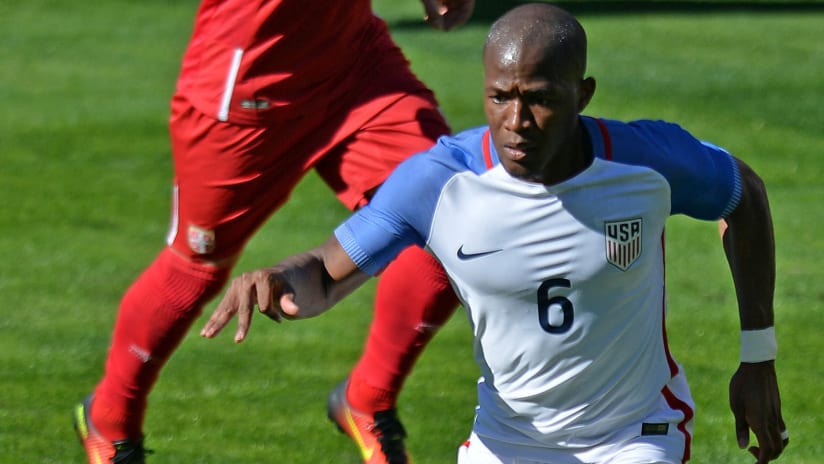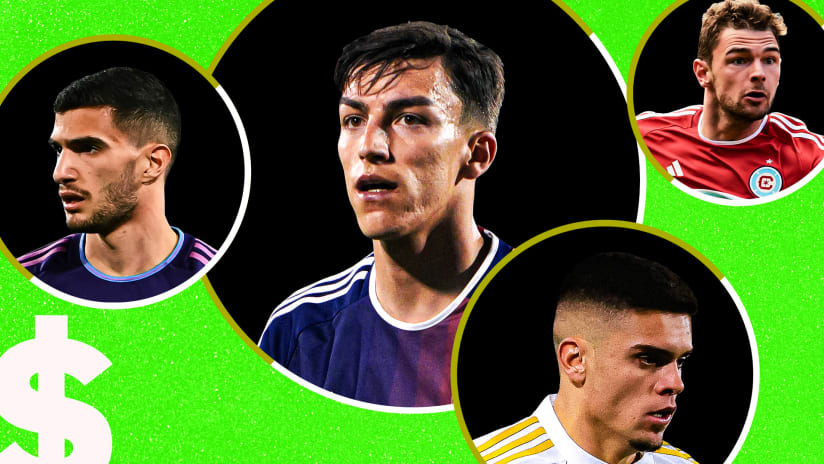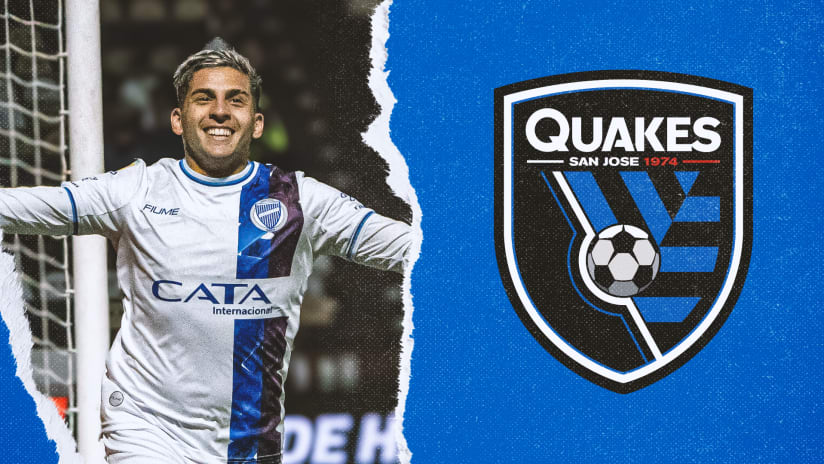The moment Nikola Ćirković stepped into the challenge, Darlington Nagbe had him in his palm. The entire stadium could see it.
At the time, the US men’s national team was well on its way to a scoreless draw with Serbia to formally kick off the second Bruce Arena era on Sunday. Both teams encountered a few brief scoring flashes before fading back into the woodwork of the match, which provided few talking points and even fewer performances for wider extrapolation.
Nagbe’s, though, was one of them. Arena granted the Portland Timbers midfielder his first-ever national team start in his 11th appearance as a danger man on the left. Nagbe didn’t have a performance for the ages – no one did, in truth – but he did provide a few glimpses of the talent that has in turns entranced and perplexed fans who’ve followed his game over the years.
In the 58th minute against Serbia, Ćirković stepped in to cut off Nagbe’s slaloming run on the left, and Nagbe simply worked around him. Using the space he created, Nagbe then carved out a pass for Sebastian Lletget, whose cross provided the fulcrum for a header by Sacha Kljestan that flashed just wide.
It was an instructive moment on assessing the continually misunderstood Nagbe, the man who always seems to be the critical guy behind the guy. And if you ask any team in MLS, they’d kill for one, whether Nagbe stuffs the scoresheet or not. This, ultimately, is the fundamental dilemma with Nagbe, the constant nagging question pulling at his utility both for club and country. He doesn’t score enough. He doesn’t rack up enough assists. He doesn’t fill a particular niche that his skill set might lead you to believe needs filling.
The reality, though, is that Nagbe is a wholly different sort of player. He is a tactical marvel unto himself, and perhaps shifting the locus of concern specifically off what he does on the scoresheet and onto his concrete impact on the flow of the match itself will utterly change his perception. And it should.
Nagbe’s never had the luxury of settling on a position, or even a specific side of the field. Since entering the league in 2011, he’s played significant minutes at eight different subtly different positional roles in three different formations under as many managers. He was whipsawed between flanks (and as a second striker under Kenny Cooper) under the 4-4-2 of John Spencer, who tried – twice – to implement a 4-3-3 that never took firm root. Under caretaker Gavin Wilkinson, Nagbe was shoehorned into a 4-2-3-1 as the primary central creator beneath Kris Boyd.
Finally, he’s played on both wings in mostly a 4-3-3 and, now, a 4-2-3-1 under Caleb Porter, who’s changed both formations and styles since joining the club in 2013. Nagbe’s played extensively on the left, right and center under his auspices.
By fundamental definition, nomads have trouble finding consistency, and perhaps that’s been Nagbe’s story to an extent. But I think, beyond the obvious surface level alterations to his role down the years, there is a defiantly consistent talent who’s been misrepresented by his skill set. Allow me to explain.
Nagbe, the unconventional winger
In the initial stages of his pro career, Nagbe was typecast as a sort of defense-splitting winger in the mode of an Eden Hazard. At least spatially, what wingers like Hazard do so well is distend the space between the fullback and his covering center back. For a winger, that’s a vital lock-pick area, essentially the weak point where the defense’s breast plate meets his shoulder hinge. Wingers adept at either splitting that gap or simply going around the fullback to the end line are goal dangerous at least a handful of times per 90 minutes.
Nagbe’s technical ability and relative speed on ball out of Akron convinced a lot of people this was his modus operandi. It’s why, since joining MLS, he’s played 44 games as a winger in the 4-3-3, 26 as a wide man in the 4-4-2 and many more, as is his most consistent present role, as one of the wide pegs in Porter’s 4-2-3-1.
When this sort of Hazard-like expectation ran up against what Nagbe actually does well? That’s where the frustration started.
In reality, Nagbe is not a Hazard. He’s not a 1-v-1 terror in space, he does not wish to step over inert balls and win bullet-train end-line crosses inside the 18, and he’d prefer not to pop shot after shot from outside the box. He doesn’t even look to score that much on his own. He’ll do each of those things from time to time – lest we forget the 2011 MLS Goal of the Year – but at his core, Nagbe is an undefinable line-linker. He is, in one sense, all that is resplendent about the unending nebulousness of soccer in a tactical sense. He defies description.
And this, in a world constantly looking to ascribe definable qualities to the objects of our passion, is simply the heart of frustration.
In reality, Nagbe occupies his own strata. At his best, he’s essentially an inside-out No. 8, or a linking winger. And you can probably name the number of players comfortable in that role on one hand. After it became blindingly obvious Nagbe did not have the bedeviling instincts of a Hazard – probably somewhere around 2013 or 2014 – it was assumed he was a sort of a central winger in the mold of a Raheem Sterling or an Arjen Robben. But that still required a high line and verticality in the attacking third that Nagbe was loathe to provide with any consistency. Every time Nagbe drove toward the box, fans stood only to watch him square off a ball or pull the fullback or trailing midfielder into the action.
Or, as was often the case, he’d drag back in a center-wide channel to pull his marker deeper into his own half. There was a misunderstanding there, that Nagbe should be challenging fullbacks and getting in behind them routinely. But that isn’t Nagbe. He’s simply his own addendum to the definition of a wide midfielder.
Like here. This is a military tactic as old as the Romans; feign retreat, yank the opposition out of position and then drop the hammer when he’s at his most vulnerable. There are not many players in MLS who would even think to do this.
Nagbe didn’t get an assist for this. He didn’t even show up on the scoresheet. But he was the pivoting action of this entire sequence, the keystone that freed Rodney Wallace that then opened space for Fanendo Adi.
The most famous example in this vein is probably from the biggest stage of Nagbe’s career. And at least in light of the events that proceeded it leading to Portland’s ultimate match-winner in the 2015 MLS Cup finale, Nagbe’s contribution was relatively anonymous.
And yet it was undeniably critical all the same.
In the seventh minute, Nagbe did three things: he generated a turnover in the Columbus half, he used the ceded space to drive into the area and he dragged markers centrally to create crossing room for Lucas Melano. Rodney Wallace’s header and Melano’s cross got the limelight. But none of this happens without Nagbe’s spadework.
There is no real easy-to-pin definition for what all this is, in technical parlance. It’s simply Nagbe.
This is the definition of the player I think Portland fans have come to better understand over the years. It’s also the one that so thoroughly confused Jurgen Klinsmann – a man who never seemed able to pin Nagbe down – that he never once started under his leadership. And, thankfully, it’s the one Arena seems more than willing to develop.
Although he probably needs to score more than the one MLS goal he had in 2016, Nagbe doesn’t need to score in buckets to influence a game. I don’t even think he necessarily needs to be on the hook for heaps of primary assists considering his unique way of breaking down midfields. In the same way the LA Galaxy won’t expect goal showers from Jermaine Jones this season, Porter, the Timbers and perhaps now US Soccer fans rightly recognize Nagbe as a unique breed all his own.














